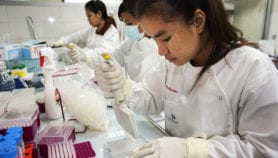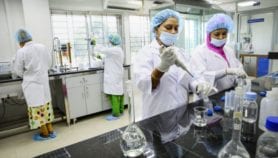Send to a friend
The details you provide on this page will not be used to send unsolicited email, and will not be sold to a 3rd party. See privacy policy.
A commitment to development-oriented innovation should be high on the agenda at the upcoming MDG summit in New York.
World leaders are due to meet in New York later this month to discuss progress towards the Millennium Development Goals (MDGs).
The goals are a relatively ambitious set of development targets — from reducing infant mortality to increasing levels of primary education — first put forward in the mid-1990s.
The New York meeting is expected to hear that, since the UN Millennium Summit in 2000, substantial progress has been made towards reaching the MDGs by the 2015 target date. For example, the proportion of the world’s population living in extreme poverty has fallen from 40 to 25 per cent over the past 15 years.
And donor countries meeting last week in Accra, Ghana, announced substantial progress in coordinating their aid programmes, and giving greater control over aid money to recipient countries.
But much more is needed to substantially reduce global poverty. Even if the proportionof people living in poverty is decreasing, the overall rise in population means that the total number remains more than one billion. As a statement issued at the Accra meeting bluntly acknowledged, "the pace of progress is too slow".
Open and closed gaps
Part of the reason for this is that developed countries are still reluctant to increase their aid budgets to the levels needed to meet the MDGs. Most donor countries still lag far behind the UN target of 0.70 per cent of gross national income, and many promises of increased aid have failed to materialise.
A report published by a UN task force last week (4 September) highlights other reasons for the slow progress. It acknowledges that there has recently been positive movement in some areas, such as bridging the digital divide by closing the gap in the mobile phone sector. Almost every African country now has more people using mobile telephones than fixed lines. Some 65 million people signed up for mobiles in 2006 alone, resulting in 22 per cent of Africans owning a mobile phone.
But the task force also says that large gaps remain in improving access to the technologies needed to increase productivity, sustain economic growth and improve service delivery in areas such as health and education.
In particular, it points out that access to essential medicines in developing countries remains "far from adequate". And it underlines the need for more funding for medical research and development in key areas including children’s dosage forms and neglected diseases.
The importance of science
All this indicates that policymakers in charge of development assistance have still to absorb the full importance of science, technology and innovation, not only in achieving individual MDGs but also in creating robust platforms for developing countries to build their own capacity to address economic and social needs.
Almost four years ago, the authors of a SciDev.Net editorial wrote that "much more than money is needed; new approaches to aid and development are also urgently required". The latter, they suggested, should be based on commitments that place science, technology and innovation systems at the centre of aid policy (see Rethinking science aid).
Others have similarly emphasised that, however desirable the individual MDGs may be, their emphasis on relatively short-term targets may deflect attention from the need for longer-term investments, for example, in higher education or research capacity.
Yet without such investment — coupled with policies like appropriate patent regimes to ensure the fruits of research are effectively absorbed into the economy — developing countries are unlikely to achieve genuinely sustainable economic and social growth.
Opportunity knocks
One of the key tasks is to promote the importance of science, technology and innovation across development agencies and developing countries alike. This must be conducted in a manner appropriate to the needs and conditions of these countries.
The UN task force report also emphasised the need for international patent rules to be more flexible to accelerate the diffusion of development technology to poorer countries. Equally critical are more widespread differential pricing practices to make key technologies affordable for all.
And, perhaps most importantly, the international community must be committed to putting science and innovation at the heart of development policy, including long-term strategies for meeting the MDGs. Too often, these remain marginalised in international development thinking.
Still, individual countries are increasingly getting the message. South Africa and, more recently, Rwanda, are leading the way in promoting innovation systems as the key to sustainable development. And Iraq has just asked the UN Conference on Trade and Development (UNCTAD) to help it move in the same direction (see UN boost for Iraq’s science and technology sector).
The New York summit later this month is an ideal opportunity for the international community to show its commitment to this way of thinking as the way out of global poverty.
David Dickson
Director, SciDev.Net













